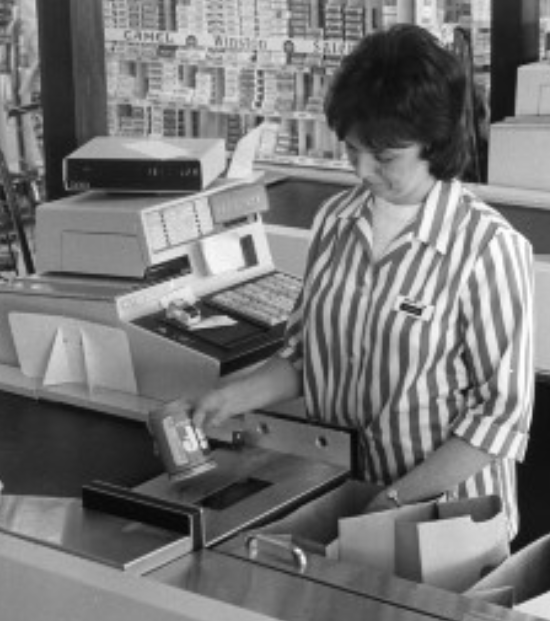Blog
I’ve been thinking...

So, a pharmacist, a nurse, a healthcare consumer, and yours truly walk into a bar. I can’t help myself. I get going on how intriguing and instructive I find it that IV medications are often referred to as cocktails, whose preparation involves following recipes. For starters, adult beverages and IVs alike may be divided into 1) ready-for-use (RFU) and 2) prepared-to-order products.
When the pharmacist in our foursome requests his favorite IPA (I’m paying), the bartender asks, “draft or bottle?” After asking for the later, the bottle opened in front of him will have made its way from the bottling plant, where it was filled in accordance with FDA current Good Manufacturing Practices (cGMPs), all the way to the bar—RFU! No doubt about what he’ll be sipping.
The nurse requests the same IPA, only draft. We watched as her ale flowed from a faucet (i.e., was prepared at the bar). That it looked like an Indian pale didn’t guarantee that the tap from which it flowed was connected to the correct keg in the back room. One sip and her discerning palate detected an error. It was sweeter and less hoppy than the brew she ordered.
Similarly, when the mojito I ordered arrived, until I tasted it, it’s anyone’s guess if the right volumes of the correct ingredients had been admixed. Should the bartender have botched the recipe, no harm no foul? I’d have received an apology and a free drink.
I asked one bartender if she ever gets it wrong. “All the time,” she said, before explaining how she recently forgot to add the tequila to a margarita. When a bartender doubts her compliance with the recipe, she dips a clean straw in the drink, caps it with her finger, empties it into her mouth, and tosses the straw—all without contaminating the drink, of course. Immediately she’ll know if she forgot the mint, added too much lime, or failed to add the active ingredient.
Technicians preparing IVs, pharmacists checking techs’ work, and nurses hanging bags sent cannot verify contents simply by looking at the fluids. Nor do they have “straw tests” for confirming that the doses were accurately prepared.
In an ideal world, all IVs would wind their way directly from manufacturers to bedsides in RFU formulations. However, due to limited RFU production, pediatric dosing, a plethora of new drugs coming to market, drug shortages, increasingly genetic-informed dosing, and the shuttering of compounding pharmacies, the need for hospitals preparing IVs seems likely to increase not decrease. This is true for single ingredients pulled into syringes (e.g., tap beers) as well as for multi-ingredient bags (e.g., mixed drinks).
So, I ask the heretofore silent millennial healthcare consumer in our party if she would prefer the IVs dripping into her veins to be sterile or accurate? My nonsensical question evokes a “Yeah. Right.” Rhetorical stare.
While easily argued that the safest IVs, with regard to sterility and accuracy, are RFU products from manufacturers, it’s as easy to avow that drugs prepared in hospitals or third-party pharmacies must also maintain sterility and achieve accuracy.
Cleanrooms, in general, are making significant progress when it comes to sterility—no small thanks to the labors of the USP. And even though their latest requirements are under appeal (sigh), the handwriting is on the wall, putting hospitals and compounding houses on notice. When all is said and done, billions will have been spent to see that the right aseptic technologies are universally implemented and faithfully utilized to ensure that clean rooms and what comes out of them are indeed, well, clean.
Without retreating from sterility, we’re past due for paying equal attention to the accuracy side of the IV preparation equation. The seminal study [1] on the subject indicates that 9 percent, nearly one of ten IV preparations, may involve errors (the leading issues being wrong ingredients and/or volumes)—too many of which, cause patient harm and sometimes death— to say nothing of the devastating impact on nurses unwittingly involved in related sentinel events.
If you referenced the footnote for this study, seeing the date (1997) might tempt you to think its value is beyond use. Except that typical compounding practices have not changed much since then.
Imagine if one in ten of Amazon’s smiley-faced boxes contained the wrong ingredient(s) when they landed on our porches? Executives at the behemoth here in Seattle tell me that their warehouse-fulfillment error rates are south of .001 (.1 percent). And that they are still spending millions on chasing more zeros. Even though shipping the wrong book has yet to endanger a customer’s life.
Similar to Amazon’s highly accurate order-fulfillment technology, a range of affordable IV workflow management systems (IV-WMS) are readily available, which have been proven effective in identifying and intercepting preparation errors—making it harder for compounding personnel and checking pharmacists to get things wrong and easier to get them right. And yet, yes, and yet, fewer than 30 percent of hospitals are using these technologies. And most that do, are using these safety systems for less than half their in-house preparations.
Our young healthcare consumer, cuts in and cuts to the chase: “Are you messing with me?” Prompting someone to call for another round.
I wonder if you’d consider pouring yourself a Cabernet and visiting THRIVcoalition.org? It will take all of five minutes to read our 300-word Mission Statement and our two brief initiatives. If you resonate with them (I know you will) I hope you will add your name to our growing list of Champions for the universal adoption and faithful utilization of IV-WMS in health-system pharmacies, with technology that meets or exceeds the criteria outlined in THRIV’s Technology Checklist. Join these healthcare colleagues and consumers in preventing patients from unnecessarily being harmed and caregivers from unintentionally doing harm.
To IV accuracy!

BTW: Drinks are on us (i.e., there is no cost involved in being a THRIV Champion).
References
[1] Flynn, Pearson, and Barker. “Observational study of accuracy in compounding i.v. admixtures at five hospitals.” Am J Health-Syst Pharm. May 1,1997; 54(8): 904-912.
Blog
I’ve been thinking...
Be a THRIV Champion
Together we can increase IV accuracy and prevent harm, including death, by promoting the universal adoption + faithful utilization of workflow management safety systems.


